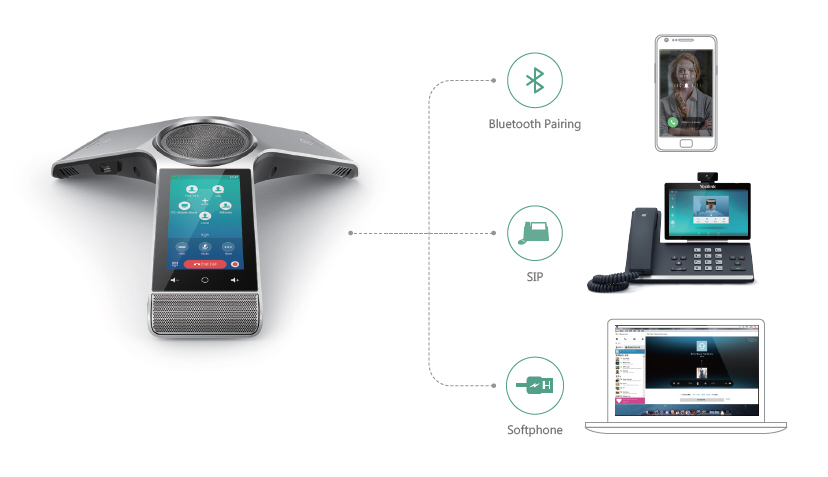In today's fast-paced business environment, call centers play a pivotal role in customer service and support. As technology evolves, many organizations are shifting from traditional phone systems to modern Voice over Internet Protocol (VoIP) solutions. This guide explores the ins and outs of VoIP for call centers, illustrating its benefits, challenges, and best practices.
What is VoIP? A Brief Overview
VoIP, or Voice over Internet Protocol, refers to the technology that allows voice communication to be transmitted over the internet rather than through traditional telephone lines. It converts sound into data packets that travel through the internet, enabling clear voice quality and flexibility.
How Does VoIP Work?
VoIP works by digitizing voice signals and sending them as data packets over a broadband connection. Here's how it typically functions:
Voice Signal Capture: Your voice is captured by a microphone. Digitization: The analog signal (your voice) is converted into digital data. Packetization: The digital data is broken down into smaller packets. Transmission: These packets are sent over the internet to the recipient's device. Reassembly: The recipient's device reassembles the packets back into audio signals.Benefits of VoIP for Call Centers
- Cost Savings: VoIP often reduces costs associated with long-distance calls and maintenance of physical infrastructure. Scalability: Easily add or remove lines based on your business needs without significant investment. Flexibility: Agents can work from anywhere with an internet connection, enhancing remote work capabilities.
A Deep Dive into VoIP Solutions for Call Centers
1. Understanding Business Phone Systems
Business phone systems encompass various telecommunication services tailored for businesses, including VoIP solutions. These systems facilitate seamless communication between employees and customers.


1.1 Types of Business Phone Systems
- Traditional Landlines Private Branch Exchange (PBX) VoIP Systems
2. Key Features of VoIP Solutions in Call Centers
Understanding key features will help you choose the right solution for your call center needs.
2.1 Auto-Dialing Capabilities
Auto-dialing features enable agents to reach customers more efficiently by automatically dialing numbers from a list.
2.2 Call Routing and Queuing
Advanced call routing capabilities direct incoming calls to the most appropriate agents based on their skills and availability.
2.3 Interactive Voice Response (IVR)
IVR systems allow customers to navigate through menus using their phone keypad or voice commands, streamlining query resolution.
3. Essential Requirements for Implementing VoIP in Call Centers
Before diving into implementation, consider these essential requirements:
3.1 Reliable Internet Connection
A robust high-speed internet connection is crucial for ensuring clear call quality without interruptions.
3.2 Quality Headsets and Equipment
Invest in quality headsets and equipment that enhance sound clarity while minimizing background noise.
Implementation Strategies for VoIP Solutions in Call Centers
4. Assessing Your Current Infrastructure
Evaluate your existing telecommunication setup before transitioning to ensure compatibility with new technologies.
4.1 Identifying Gaps and Needs
Determine what aspects of your current system fall short of meeting operational demands.

5. Selecting a VoIP Provider
Choosing the right provider can make or break your experience with VoIP solutions.
5.1 Evaluating Providers Based on Features and Pricing
Compare different providers based on their offerings, pricing models, customer support, and user reviews.
Managing Transition from Traditional Systems to VoIP Solutions
6. Training Your Staff on New Technology
Proper training helps ensure that agents are comfortable using new tools effectively.
6.1 Creating Training Modules
Develop comprehensive training programs tailored to different proficiency levels among staff members.
7. Minimizing Downtime During Transition
Plan carefully to minimize disruptions during the transition process by gradually migrating users rather than doing a full switch overnight.
FAQs about VoIP Solutions for Call Centers
Q1: Is VoIP reliable enough for business communications?
Absolutely! When paired with a solid internet connection, VoIP provides reliable communication Business Phone System https://soundcurve.com/voip-phone-service-marion-county-or/ https://soundcurve.com/voip-phone-service-yamhill-county-or/ services comparable to traditional phone systems.
Q2: Can I keep my existing phone number when switching to VoIP?
Yes! Most providers offer number porting services that allow you to retain your existing phone number during the transition.
Q3: What happens if my internet goes down?
If your internet fails, you may lose access to your VoIP service; however, some providers offer failover options like forwarding calls to mobile devices during outages.
Q4: Are there any hidden costs associated with VoIP?
While most providers have transparent pricing models, it's wise to read contracts carefully as additional fees might apply based on specific features or usage levels.
Q5: Can I integrate my CRM with my VoIP system?
Yes! Many modern VoIP solutions offer integration options with popular CRM platforms enhancing workflow efficiency within call centers.
Q6: How secure is VoIP compared to traditional phone systems?
VoIP security can be robust but requires proper configurations such as encryption protocols in place; thus understanding security measures when choosing providers is key!
Conclusion
Adopting a comprehensive approach towards implementing VoIP solutions within your call center can yield significant improvements in both efficiency and cost-effectiveness compared with traditional business phone systems. By understanding key features, conducting thorough assessments prior to transition, providing adequate staff training after implementation will not only enhance productivity but also improve customer satisfaction rates significantly!
As businesses continue evolving toward digital solutions like "A Comprehensive Guide To VOip Solutions For Call Centers," those who adapt quickly will undoubtedly thrive while others may struggle just keeping pace!
This guide aims at empowering decision-makers with valuable insights necessary when considering making this pivotal shift towards more advanced telecommunication methods—because staying ahead means never settling!